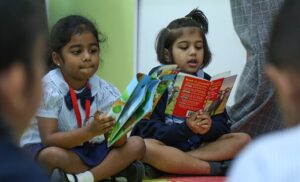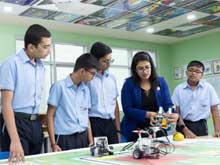The start of a person’s financial literacy journey is undeniably important and critical to their financial successes in the future. The cornerstone of any relationship with money is laid out by financial literacy, which is a lifetime learning process. Financial literacy is being financially literate. It is the understanding and being proficient in the use of different skills, such as investing, budgeting, and personal financial management. Learning the fundamental basics of financial prowess begins as kids.
We need to teach primary grade students about money through simple yet practical lessons at home and school. We understand that students of different ages have different ways of perceiving knowledge and so, we need to break down everything into parts which provide you with information on financial literacy activities for elementary students. Also, educators need to promote financial literacy for students and various activities are now available to nourish financial literacy. It is extremely crucial to instill wise financial behavior in young minds.
As part of parent-school partnership and with the purpose of teaching financial literacy, we at GIIS Abu Dhabi were elated to have a parent Ms Nisha Kawatkar with us to conduct a session on Financial Literacy for our Primary Grade students. She is a qualified CA from India and CPA from Australia. It was an informative session for all students where Ms Nisha made all students aware about finances and saving through story telling sessions and interactive quizzes. The students were engaged throughout the session with various activities and the concept of saving and budgeting was made clear to them in a comprehensive manner.
Important steps in the process of Financial Literacy which were focused in the session by Ms Nisha are:
● The names and values of the various coins and bills that are used to pay for products and services must be known to children. Children learn the names of coins at this stage, as well as their respective worth in terms of purchasing power.
● It is pivotal to establish structured, financial decision-making activities for them. Early guidance in categorizing money creates patterns for later behavior related to money management. Introduce the idea of separating their money into “save,” “spend,” and “sharing” categories to your kids gradually.
● Children need to understand that money must be earned and does not come easily at this stage. You can accomplish this by assigning them simple tasks or errands in exchange for monetary compensation. This activity will help them understand the earning process. If this activity is instilled in children as young as seven, they will learn about earning in no time.
● Children need to learn how to save and segregate their spending plans wisely. We must first teach them budgeting because it is one of the most important aspects of financial management. Children should be taught to divide their earnings for various purposes to achieve financial freedom since it is the first step in providing financial literacy activities for elementary students. Knowing how much money is available, how much money has been spent, and how much money needs to be saved for future requirements are all part of this. This phase is crucial for introducing primary grade kids to the idea of being accountable for managing money by keeping correct records.
● The final step in teaching financial literacy at school, we must teach them how to spend their money wisely and how reckless spending leads to financial problems.
Teaching financial literacy to children at a young age has several advantages, including:
● Students will understand the value of money and will start to demand less. Explaining the prices of various items to children will help them gradually determine what is and isn’t expensive in society.
● Once they understand the value of things, they will be much more appreciative when they are given a gift or something unexpectedly.
● By learning about financial risks, students will be better prepared to avoid financial debt and bankruptcy in the future.
● They may be more likely to plan for future events, such as saving for a vacation, investing in real estate, or even putting money aside for retirement.
● They will live happier, less stressful lives – this benefit is often overlooked, but should be heavily emphasized when considering the long-term consequences of teaching financial literacy.
As educators, we can use some activities with the aim to develop financial literacy among children.
● Demonstrate the significance of saving
● Encourage students to work part-time
● Teach them how to keep track of their expenditure
● Make it in the form of a game
● Discuss money directly
We are all working hard to ensure that our students inherit a prosperous financial future. To ensure that our students truly appreciate this luxury, we must teach them the value of money and begin grooming them today. Money is a necessary commodity, and it is critical to master personal money management in order to achieve and maintain a decent financial lifestyle.
Some websites online can be used for teaching financial literacy to kids. Gamification can be used to teach financial lessons to students. It is one of the best financial literacy activities. Even Monopoly can teach important lessons, with players deciding which properties or buying strategies will yield the highest payoffs and weighing risk versus reward with each move. Even board games can teach children the value of being frugal. Payday is one of the best games for teaching kids important money management skills.
Leading by example is one of the best ways to teach your children about financial health, and teaching children basic financial knowledge from an early age will benefit them in the long run, allowing them to make life’s big financial decisions and have an expert perspective on their finances.





























